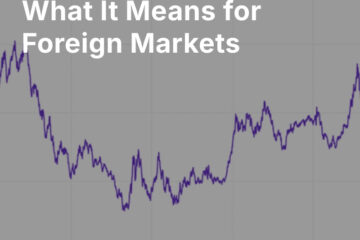The Biden administration has engaged substantively on digital asset regulation. It is preparing an executive order, after input from various agencies, including the Financial Stability Oversight Council, which will set the stage for the development of a comprehensive digital asset strategy document later this year. The executive order will likely also comment on the development of a central bank digital currency by the Federal Reserve, which has requested public comment and will be collecting inputs until May. Some friction has apparently arisen between the administration and the Department of the Treasury, whose secretary, Janet Yellen, is said to be in favor of more time and space for independent Fed deliberation before the executive order is issued.
In short, 2022 is going to be a very active year for digital asset regulation and legislation. This is a good thing — and not simply because members of the public interested in digital assets are better served by robust regulatory frameworks, as we have often argued. It’s a good thing because one way or another, digital assets are going to transform the global financial system. The countries most hospitable to the development and deployment of these technologies are going to reap enormous benefits in coming decades in terms of financial and economic influence.
In a nutshell, the importance and trajectory of the digital transformation of finance can be seen in the use-case of stablecoins — which explains why the Biden administration began exploring the regulation of stablecoins months ago.
“Stablecoins” are, most simply, digital tokens pegged to fiat currencies or fiat currency baskets (this was to be the structure of Meta’s [FB] Diem stablecoin, whose technology was recently sold to Silvergate Capital [SI]). Some stablecoins are backed by audited deposits of the fiat currencies themselves; others have been backed by baskets of digital currencies according to algorithms intended to maintain a stable value relative to fiat. Some of these latter have failed catastrophically. One could also call gold-backed tokens a kind of stablecoin, such as Paxos’ PaxGold [PAXG] token, which represents a share of a deliverable, audited gold bar in a London vault.
The importance of stablecoins is hard to overstate. With the arrival of defi (decentralized finance), people everywhere in the world will very quickly gain access to a financial ecosystem independent of the jurisdiction in which they happen to live. Simply by having a smartphone, they will be able to hold and exchange wealth denominated in any currency that has a functioning stablecoin — and they will be able to use that wealth to engage with financial service providers anywhere in the world. Those exchanges will be governed by logic built into smart contracts — rather than by potentially corrupt or inefficient local officials, and unreliable local legal structures, financial policies, and economics.
As a simple example: a smallhold farmer somewhere in the developing world with a smartphone will be able to use a defi contract to secure microinsurance against crop failure; and if his crop does fail, collect reliably on it without needing to pay any bribes, in a monetary form that is not tied to an unstable local currency, and that can’t be stolen from him. Very likely, the development of these technologies will doom the world’s hundred weakest currencies in fairly short order. This is the sort of use-case that shows how digital assets can be, in effect, the technologically enforced extension of the rule of law into regions where hitherto it has been challenged. Our regular readers will know that we view economic liberty and the rule of law as the essential building-blocks of prosperity.
Properly regulated stablecoins will make the currencies that back them even more dominant in global use than they are already. If the U.S. wants to secure the dominance of the U.S. dollar and all the advantages this brings, the best thing it can do (besides implementing a more responsible domestic fiscal and monetary policy) is to make sure that U.S. dollar stablecoins are regulated, reliable, secure, and ready for prime time as quickly as possible. Thankfully, the Fed has already indicated that it believes there is space for both a U.S. central bank digital currency, and multiple private-sector regulated stablecoins.
For our part, we are happy that somewhere in the Biden administration there are people working on this issue who are competent and understand its importance The major fiat-backed stablecoin providers, such as Coinbase [COIN], Circle, Gemini, and Paxos, are all eager participants in the conversation.


